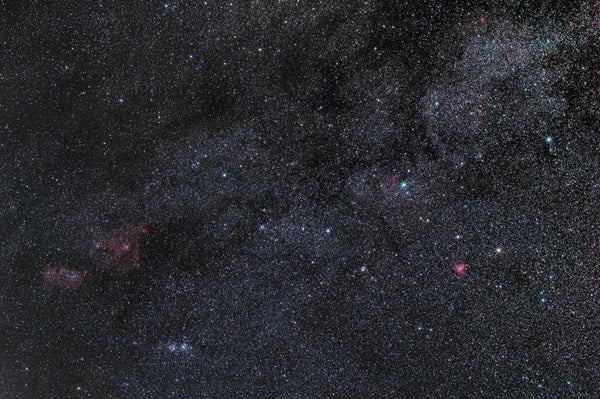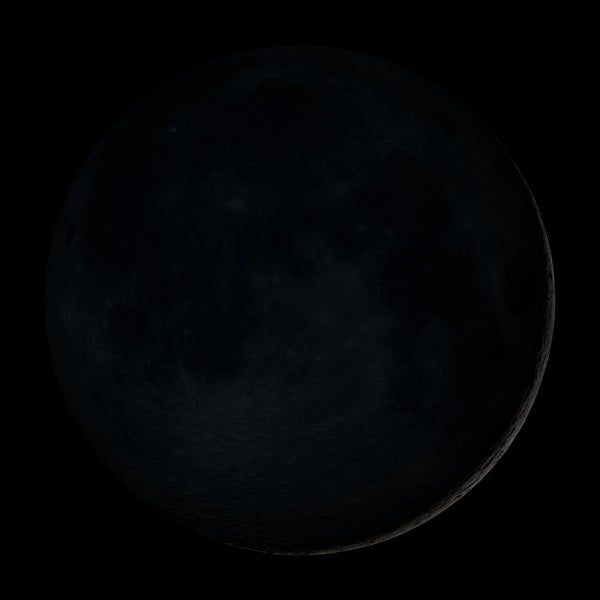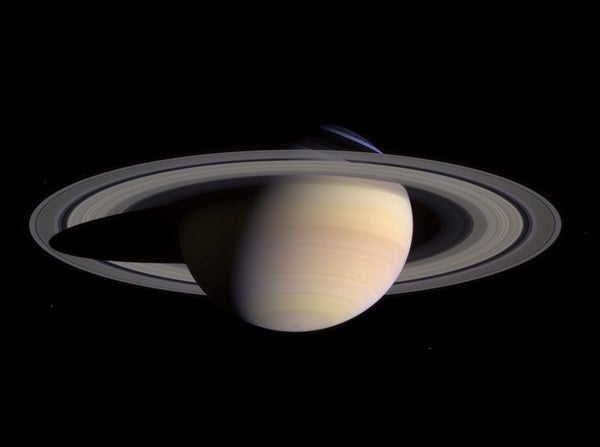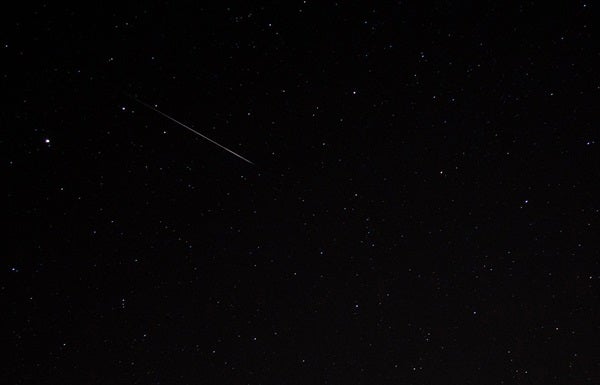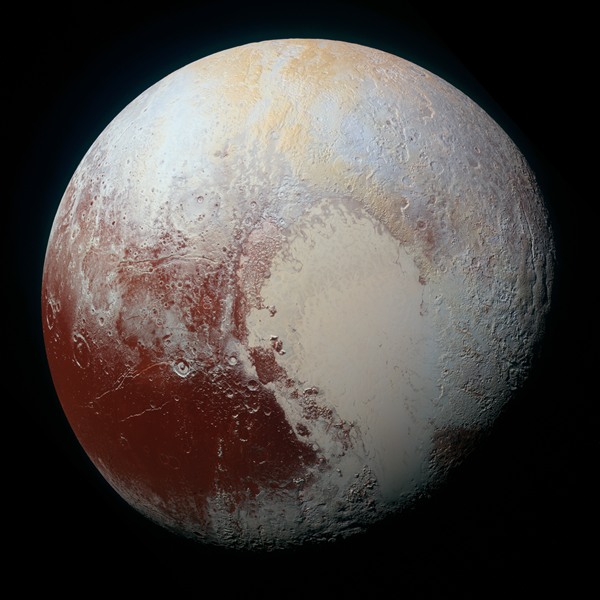Head outside in the early evening and you can see the Big Dipper scraping the northern horizon. For latitudes north of about 40°, this conspicuous asterism never rises or sets (“circumpolar” in astronomical parlance), though December evenings find it at its lowest ebb. This means that the constellation on the opposite side of the North Celestial Pole, the familiar W-shaped Cassiopeia, currently rides highest in the sky.
Saturday, December 24
Two of the finest deep-sky objects shine prominently on evenings in late December. The Pleiades and Hyades star clusters climb highest in the south during midevening but remain conspicuous nearly the whole night. The Pleiades, also known at the Seven Sisters and M45, appears like a small dipper to naked eyes. The larger Hyades forms the V-shaped head of Taurus the Bull. Although both look nice with the naked eye, binoculars show them best.
Sunday, December 25
This year provides a stunning “Christmas Star” for early evening viewers. Head outside during the deepening twilight and look to the southwest for the brilliant light of Venus. The brightest planet shines at magnitude –4.4 and shows up nicely from half an hour past sundown until it sets after 8 p.m. local time. A telescope reveals the planet’s 21″-diameter disk, which appears about 60 percent lit.
The Moon reaches apogee, the farthest point in its orbit around Earth, at 12:55 a.m. EST. It then lies 252,196 miles (405,870 kilometers) from Earth’s center.
The brightest star in the sky (after the Sun, of course) puts on quite a show on December evenings. Gleaming at magnitude –1.5, Sirius shines nearly four times brighter than the next brightest star visible from mid-northern latitudes: Arcturus in the constellation Boötes. Sirius currently rises before 7:30 p.m. local time and ascends in the southeast throughout the evening hours.
Tuesday, December 27
For those who recently caught the observing bug, the so-called Summer Triangle must seem like a huge misnomer. That’s because this asterism remains on view after darkness falls in late December. Look for Vega, the fifth-brightest star in the sky and the brightest triangle member, in the northwest after nightfall. Deneb lies above Vega and about halfway to the zenith. Deneb marks the top of another asterism, the Northern Cross, which stands nearly straight up from the horizon on December evenings. Altair, the third triangle member, appears due west and near the same altitude as Vega. The trio remains on view until Altair sets just before 8 p.m. local time.
Wednesday, December 28
As winter tightens its grip on the Northern Hemisphere during the year’s final week, one of the most familiar constellations takes center stage. Orion the Hunter appears conspicuous in the eastern sky as twilight fades and grows even more prominent after darkness settles in. The star group climbs highest in the south around 11 p.m. local time, when it stands about halfway to the zenith from mid-northern latitudes.
Mercury reaches inferior conjunction at 2 p.m. EST. This means the innermost planet lies between the Sun and Earth and remains hidden in our star’s glare. It will reappear before dawn in early January.
Thursday, December 29
Uranus reached opposition more than two months ago, but it remains a tempting target. The outer planet climbs highest in the south around 7 p.m. local time, when it appears more than halfway to the zenith. The magnitude 5.8 world reaches its stationary point in southern Pisces today, when it lies 0.6° east-southeast of the 5th-magnitude star Zeta (z) Piscium. Although Uranus shines brightly enough to glimpse with the naked eye under a dark sky, binoculars make the task much easier. A telescope reveals the planet’s blue-green disk, which spans 3.6″.
New Moon occurs at 1:53 a.m. EST. At its New phase, the Moon crosses the sky with the Sun and so remains hidden in our star’s glare.
Although Saturn passed on the opposite side of the Sun from Earth less than three weeks ago (on December 10), it already appears low in the southeast during morning twilight. From mid-northern latitudes, the ringed planet lies about 5° above the horizon 45 minutes before sunrise. It shines at magnitude 0.5, which makes it the brightest point of light in this part of the sky.
Saturday, December 31
Mars continues to put on a nice show these December evenings. It appears about 30° above the southwestern horizon once twilight fades to darkness, and it doesn’t set until after 9 p.m. local time. The magnitude 0.9 Red Planet lies among the background stars of Aquarius, where it has a spectacular conjunction with Neptune this evening. For observers in North America, the two planets stand 9.8′ apart from the East Coast and just 4.4′ apart from the West Coast an hour before they set. (Those in Hawaii can witness closest approach, when Mars skims 1.3′ north of Neptune.) Through a telescope, Neptune looks like an 8th-magnitude moon of Mars, with the icy blue-gray hue of the distant world providing a striking contrast to the warm, ruddy glow of our neighbor. This is the closest conjunction between these two planets in more than 700 years.
Sunday, January 1
A lovely four-day-old Moon stands 25° above the southwestern horizon an hour after sunset. You should notice the ashen glow of earthshine illuminating the “dark” side of the 13-percent-lit crescent. You also can’t miss brilliant Venus hanging 5° to the Moon’s upper left.
The waxing crescent Moon stands between Mars and Venus in this evening’s sky. Notice the brightness difference between the two planets. At magnitude 0.9, Mars glows less than 1 percent as bright as Venus.
Tuesday, January 3
The Quadrantid meteor shower reaches its peak this morning. And, with the waxing crescent Moon setting before 10 p.m. local time, observers with clear weather will have ideal conditions. Under a dark sky, viewers can expect to see up to 120 meteors per hour — an average of two per minute. The meteors appear to radiate from a spot in the northern part of the constellation Boötes. This region climbs high in the northeast as dawn approaches, which makes the hours after midnight the best for viewing.
Wednesday, January 4
Earth reaches perihelion, the closest point to the Sun during its year-long orbit, at 9 a.m. EST. The two then lie 91.4 million miles (147.1 million kilometers) apart. It surprises many people to learn that Earth comes closest to the Sun in the dead of winter, but the cold weather in the Northern Hemisphere at this time of year arises because the Sun lies low in the sky.
The Sun is in the news more than once today. Although people in the Northern Hemisphere experienced the shortest day of the year two weeks ago (at the winter solstice December 21), the Sun has continued to rise slightly later with each passing day. That trend stops this morning for those at 40° north latitude. Tomorrow’s sunrise will arrive a second or two earlier than today’s. This turnover point depends on latitude. If you live farther north, the switch occurred a few days ago; closer to the equator, the change won’t happen until later this month.
Thursday, January 5
First Quarter Moon arrives at 2:47 p.m. EST. Our satellite rises in the east around noon local time but doesn’t become prominent until the Sun sets around 5 p.m. By 6 p.m., it appears due south and nearly two-thirds of the way to the zenith. The Moon’s half-lit orb then lies among the background stars of southern Pisces.
Friday, January 6
Jupiter dominates the morning sky in early January. The giant planet rises before 1 a.m. local time and climbs nearly halfway to the zenith in the southern sky by the time twilight begins. Jupiter shines brilliantly at magnitude –2.0 and shows a disk that spans 36″ when viewed through a telescope. A small scope also reveals the planet’s four bright moons, though you may have to hunt for one of them this morning. The shadow of volcanically active Io starts to transit Jupiter at 5:24 a.m. EST, and the moon itself begins to cross the planet’s disk at 6:37 a.m.
Saturday, January 7
The variable star Algol in Perseus appears faintest at 12:30 a.m. EST tomorrow morning, when it shines at magnitude 3.4. If you start watching it immediately after darkness falls, you can see it dim from its peak brightness (magnitude 2.1) to minimum and then rise back to maximum all in a single night. This eclipsing binary star runs through a cycle from minimum to maximum and back every 2.87 days, but the drop from peak brightness and subsequent rise lasts only about 10 hours. Algol appears in the eastern sky after sunset and passes nearly overhead around 8 p.m. local time.
The dwarf planet Pluto is in conjunction with the Sun at 2 a.m. EST. The distant world then lies on the far side of the Sun from our perspective and can’t be seen.
Sunday, January 8
Although Mercury passed between the Sun and Earth in late December, it already has returned to view before dawn. This morning, you can find the inner planet 9° above the southeastern horizon 30 minutes before sunrise. Shining at magnitude 0.2, it should show up through the twilight glow. If you don’t see it right away, binoculars will bring it into view. A telescope reveals Mercury’s 8″-diameter disk, which appears one-third illuminated.

